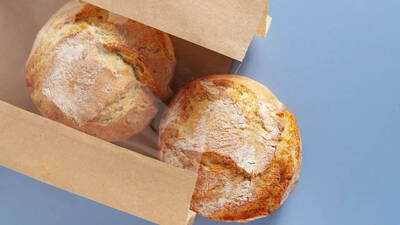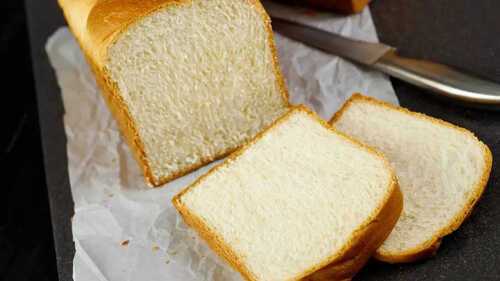Tired of stale bread and piles of plastic waste? A recent study by the University of Grande Dourados reveals that traditional plastic wraps and bags trap moisture, creating an ideal environment for mold growth and accelerated staling. But there’s a smarter, eco-friendly way to keep bread fresh naturally. Using breathable, natural materials like cotton cloth, linen wraps, or paper bags allows your bread to maintain its soft crumb and crisp crust for days, without creating unnecessary plastic waste.
These methods not only preserve freshness but also support a sustainable lifestyle, making every loaf last longer while helping the planet. Whether you’re a home baker or someone who loves fresh sandwiches every day, knowing how to store bread correctly can make a huge difference in taste, texture, and longevity. In this article, we’ll explore the science behind bread staling, the benefits of natural bread storage , and practical tips to keep your bread soft, flavorful, and mold-free for longer.
Why proper bread storage helps keep bread fresh

Bread is a living food that continues to undergo chemical changes after baking. Improper bread storage, especially in plastic, traps moisture and accelerates mold growth. The University of Grande Dourados study highlights that air circulation is key to preventing spoilage.
By using natural bread storage methods, such as cotton cloths or paper bags, you can maintain the bread’s texture and flavor for longer. Proper storage slows down staling, allowing you to enjoy fresh, soft bread for days instead of hours.
Natural bread storage techniques to keep bread fresh
Natural bread storage methods are simple, effective, and eco-friendly. Here’s how you can apply them:
These methods are proven to keep bread fresh naturally without the need for plastic.
Tips to extend bread freshness with natural storage

To maximize freshness, combine natural bread storage with these additional tips:
These simple practices help your bread stay soft, flavorful, and mold-free longer.
Benefits of using natural bread storage over plastic
Switching to natural bread storage offers multiple benefits:
By adopting these methods, you save money, improve taste and texture, and contribute positively to the environment.
Proper bread storage is essential to enjoy fresh, soft, and flavorful bread while reducing waste. The University of Grande Dourados study proves that trapped moisture in plastic accelerates staling and mold growth, and switching to natural materials like cotton cloth or paper bags makes a significant difference.
By combining natural bread storage techniques, mindful slicing, and freezing when necessary, you can keep bread fresh naturally for days without harming the planet. Make the switch today and savor every loaf at its best, crusty, soft, and perfectly fresh.
Also read| Cancer AIIMS gastroenterologist reveals 9 food facts for better gut health: Why slightly green bananas are best
These methods not only preserve freshness but also support a sustainable lifestyle, making every loaf last longer while helping the planet. Whether you’re a home baker or someone who loves fresh sandwiches every day, knowing how to store bread correctly can make a huge difference in taste, texture, and longevity. In this article, we’ll explore the science behind bread staling, the benefits of natural bread storage , and practical tips to keep your bread soft, flavorful, and mold-free for longer.
Why proper bread storage helps keep bread fresh
Bread is a living food that continues to undergo chemical changes after baking. Improper bread storage, especially in plastic, traps moisture and accelerates mold growth. The University of Grande Dourados study highlights that air circulation is key to preventing spoilage.
By using natural bread storage methods, such as cotton cloths or paper bags, you can maintain the bread’s texture and flavor for longer. Proper storage slows down staling, allowing you to enjoy fresh, soft bread for days instead of hours.
Natural bread storage techniques to keep bread fresh
Natural bread storage methods are simple, effective, and eco-friendly. Here’s how you can apply them:
- Cotton or linen cloth wraps: Wrap your loaf in a clean cloth. These breathable fabrics allow the bread to “breathe,” preventing sogginess while keeping it soft.
- Paper bags for short-term storage: A sturdy paper bag lets air circulate but protects the bread from drying out too quickly.
- Bread boxes: Wooden or metal boxes provide a controlled environment, reducing humidity and slowing mold growth.
These methods are proven to keep bread fresh naturally without the need for plastic.
Tips to extend bread freshness with natural storage
To maximize freshness, combine natural bread storage with these additional tips:
- Store at room temperature: Keep bread in a cool, dry place away from direct sunlight. Avoid the fridge, which can accelerate staling.
- Slice as needed: Only cut what you plan to eat immediately. A whole loaf stays fresher longer.
- Freeze for long-term storage: If you can’t finish the loaf in a few days, wrap it in a cloth or paper and freeze. Thaw slices as needed.
These simple practices help your bread stay soft, flavorful, and mold-free longer.
Benefits of using natural bread storage over plastic
Switching to natural bread storage offers multiple benefits:
- Environmental impact: Reduces plastic waste and supports sustainability.
- Better texture: Maintains a soft interior and crispy crust.
- Flavor preservation: Prevents off-flavors that plastic can sometimes cause.
- Healthier choice: Minimizes contact with chemicals from plastic packaging.
By adopting these methods, you save money, improve taste and texture, and contribute positively to the environment.
Proper bread storage is essential to enjoy fresh, soft, and flavorful bread while reducing waste. The University of Grande Dourados study proves that trapped moisture in plastic accelerates staling and mold growth, and switching to natural materials like cotton cloth or paper bags makes a significant difference.
By combining natural bread storage techniques, mindful slicing, and freezing when necessary, you can keep bread fresh naturally for days without harming the planet. Make the switch today and savor every loaf at its best, crusty, soft, and perfectly fresh.
Also read| Cancer AIIMS gastroenterologist reveals 9 food facts for better gut health: Why slightly green bananas are best
You may also like

GST reforms may offset tariff impact, India remains fastest-growing economy: Fitch Solutions' BMI

Four brothers from Rajasthan killed in Vaishno Devi landslide

Three members of family die in Kerala's Kasaragod in suspected suicide

How to Download Your E-Voter ID Instantly: Step-by-Step Guide to Get Digital Voter Card Online or on Mobile

Minneapolis church shooting: Robin Westman's identity, deranged 'manifesto' and Annunciation school connection — 10 things to know






